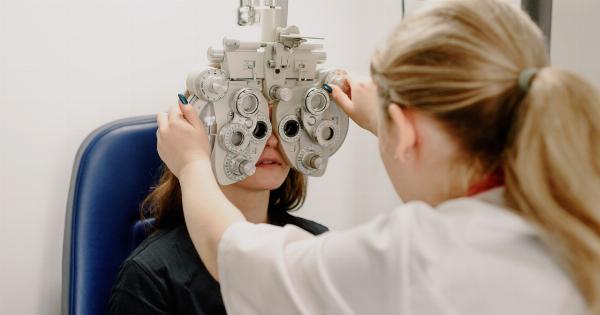When it comes to your eye health, having insurance coverage can make a significant difference in accessing the care you need.
However, understanding what your eye insurance includes and excludes is crucial for making informed decisions about your eye care. In this article, we will delve into the key facts about eye insurance coverage, exploring what is typically included and what is not.
1. Regular Eye Exams
One of the most fundamental aspects of eye insurance coverage is the inclusion of regular eye exams. Most insurance plans cover routine eye exams, which are typically recommended once a year.
These exams allow your eye care professional to assess your vision, check for any refractive errors, and detect potential eye diseases or conditions in their early stages.
2. Prescription Glasses
If you require prescription glasses to correct your vision, your eye insurance will typically cover a portion of the cost. The coverage may vary depending on the type of glasses you choose and the lens options.
It is important to review your insurance plan to understand the specific coverage limits and any out-of-pocket expenses you may incur.
3. Contact Lenses
Similar to prescription glasses, eye insurance often provides coverage for contact lenses. The coverage may be limited to a certain amount per year or follow specific guidelines set by your insurance plan.
Some plans may cover the cost of essential contact lens fittings and follow-up appointments as well.
4. Corrective Eye Surgeries
Eye insurance occasionally covers corrective eye surgeries such as LASIK or PRK. However, not all insurance plans include these procedures, and some may have specific eligibility criteria or limitations on the coverage amount.
It is advisable to consult your insurance provider to determine if your plan includes coverage for such surgeries.
5. Treatment for Eye Diseases and Conditions
Eye insurance typically covers the diagnosis and treatment of eye diseases and conditions. This includes conditions such as glaucoma, cataracts, macular degeneration, and diabetic retinopathy.
Depending on your insurance plan, coverage may include medications, surgeries, and ongoing management of these conditions.
6. Pediatric Eye Care
Many eye insurance plans include coverage for pediatric eye care. Regular eye exams for children are essential for identifying vision problems at an early age and ensuring proper eye development.
Some plans also cover the cost of glasses or contact lenses for children.
7. Vision Therapy
While vision therapy is not always covered by eye insurance, some plans recognize its therapeutic benefits and include coverage for certain vision therapy services.
Vision therapy is a personalized program of eye exercises and activities designed to improve visual skills and alleviate vision-related problems.
8. Cosmetic Eye Procedures
It is important to note that eye insurance generally does not cover cosmetic eye procedures, such as eyelid surgeries for cosmetic enhancement or wrinkle reduction. These procedures are usually considered elective and not medically necessary.
9. Out-of-Network Providers
Most eye insurance plans have a network of preferred providers. Visiting an in-network provider often results in lower out-of-pocket expenses.
However, some plans also offer coverage for out-of-network providers, although the coverage may be limited or subject to higher deductibles and co-pays.
10. Insurance Limitations and Exclusions
It is crucial to carefully review your eye insurance policy for any limitations and exclusions. Certain procedures or treatments may have restrictions, waiting periods, or specific eligibility criteria.
Understanding these limitations and exclusions can help you avoid surprises and better plan your eye care needs.
Conclusion
Eye insurance coverage plays a vital role in ensuring access to essential eye care services. Understanding what is included and not included in your insurance plan can empower you to make informed decisions about your eye health.
Regular eye exams, prescription glasses, contact lenses, treatment for eye diseases, and pediatric eye care are commonly covered, while cosmetic eye procedures are usually excluded. By familiarizing yourself with the specifics of your eye insurance coverage, you can maintain optimal eye health and safeguard your vision for years to come.




























